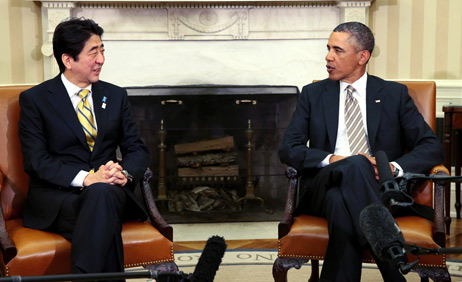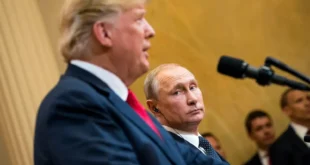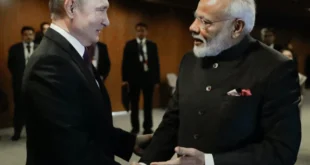U.S. NEWS & WORLD REPORT
As Japanese Prime Minister Shinzo Abe prepares to visit the United States next week, attention is focused on the historic nature of the trip. Abe will be the first Japanese leader to speak before a joint session of Congress, an event all the more poignant as it occurs in this 70th anniversary year of World War II’s end.
A more lasting and meaningful outcome of the visit, however, will be something different: The approval of revised guidelines for U.S.-Japan defense cooperation. Untouched for nearly two decades, the updated guidelines have been negotiated painstakingly for over a year and will be adopted at a side meeting of the two countries’ defense and foreign policy leaders in conjunction with Abe’s speech. This document – broadly outlining bilateral agreement on security burden sharing – should open a door to more integrated alliance activity in a wider range of contingencies in East Asia and beyond.
Since the end of the Cold War, Japanese leaders and the legislature opened up new legal avenues for Japan to contribute in the security arena as well, albeit in a limited way to remain consistent with Japan’s pacifist constitution. Participation in certain U.N. peacekeeping operations since 1992 is one concrete example, and legislation in 1999 allowed Japanese Self-Defense Forces to provide “rear-area” support to U.S. troops if they were needed to stop North Korean aggression. Japan’s international role on the security front, however, always lagged far behind that of other areas and fell short of its ability.
Today, Abe’s government is preparing new security legislation that will expand the activities Japan can engage in, and the revised U.S.-Japan defense guidelines describe how bilateral cooperation might function in anticipation of the new laws.
The two most important aspects of the updated guidelines are a shift to a more integrated style of security cooperation and a new bilateral coordination team that will help manage the political and operational dynamics of this shift. These changes are increasingly important as North Korea modernizes its nuclear missile force and as emerging military domains of cyber and space blur the lines between “forward area” and “rear area.” China’s rapidly increasing military budget and territorial tensions in the East China Sea are also driving Japan to allow its Self-Defense Forces to do more, and Washington is looking for flexible alliance options to address unpredictable security challenges in the region. Both sides see benefit in modernizing their defense cooperation.
Whereas the current alliance concept creates separate zones of activity that require relatively little joint planning or training, the revised guidelines should enable more integrated operations especially in the areas of missile defense, surveillance and reconnaissance, antisubmarine warfare, counter proliferation and more direct logistical support of each other, depending on the situation. These could apply to the defense of Japan or other situations around the world.
With any luck, the allies will never have to carry out these missions against real threats, but the newfound ability to plan and train for them will strengthen the alliance and enhance deterrence regardless. This is good for both countries and contributes to regional stability. The new guidelines also could facilitate greater multilateral security cooperation and exercises involving countries like Australia, South Korea and India, which can bolster regional confidence and capacity to address collective security challenges. Cooperation might also be possible further afield, if, for example, Japanese surveillance support could assist a U.N.-authorized peace building mission someday in Yemen, with assets stationed in nearby Djibouti.
Overall, the revised guidelines should allow for more comprehensive alliance cooperation that adds a substantive security component to already robust economic and foreign policy coordination (expanding on Ikeda’s 1961 pledge), but there will be political and legal limits to what Japan can do. Japan’s new security legislation will not allow the Self-Defense Forces to use force unless the country is directly threatened or attacked, and its track record suggests that Tokyo will be very selective about joining multilateral coalitions. The new guidelines will provide opportunities for cooperation over time, but these should be explored incrementally in the near term, with due regard for Japanese domestic and regional sensitivities. Change won’t happen overnight.
The evolution of the U.S.-Japan alliance is a remarkable example of the power of reconciliation and partnership in service to common goals and public goods. That does not mean that the allies agree on everything or work exclusively together, but it is a relationship that has broadened and matured over seven decades and has delivered a great deal of value to the global community (while benefiting their citizens as well).
High profile speeches, whether by Ikeda in 1961 or Abe 54 years later, are often forgotten quickly, but they can set important goals for a bilateral relationship and provide direction to and empower policymakers. Abe will no doubt echo Ikeda’s pledge for a “positive and purposeful role” and highlight Japan’s contributions over the years. He might also set new goals for the future. But nothing should obscure the accomplishment of these new defense guidelines or distract our two countries from steadily implementing them for our own security and for global peace and stability.
 Geostrategic Media Political Commentary, Analysis, Security, Defense
Geostrategic Media Political Commentary, Analysis, Security, Defense





